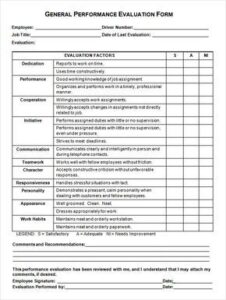KNUST GRADING SYSTEM – CWA OR GPA

What grading system does KNUST uses? what is the pass mark? How do I calculate my average?
If you are wondering about any of the questions above, then this article will be very helpful. This is because, in this article, we will dive deep into how you can understand the KNUST grading system and calculate your weighted average and cumulative weighted average.
Cumulative Weighted Average or Grade Point Average?
Most universities in Ghana use the Grade Point Average (GPA), most Ghanaians are used to the GPA calculation and often get confused converting CWA to GPA.
The Kwame Nkrumah University of Science and Technology is one of the few schools in Ghana that uses the Cumulative Weighted Average, often called CWA, as a grading system.
KNUST uses the CWA grading system.
Without further ado, let us talk about the CWA. The CWA is simply the system that KNUST uses to grade its students. Starting from first year first semester every student has a CWA of 100.00. Nevertheless, by the end of first year first semester, students average’s depend on their performances in assignments, quizzes, mid-semester exams, practical works, workshops, reports and end of semester examinations.
Semester examinations mostly make up 70% of the total marks of a course while quizzes, mid-semester examinations, practical works, assignments, research, punctuality, group works etc. sum up to 30% to make a complete 100% for a course. Table one shows how the averages are interpreted.
Table 1: Class of degrees and their corresponding CWA
| Class | CWA |
| First Class | 70.00 and above |
| Second Class Upper | 60.00 – 69.99 |
| Second Class Lower | 50.00 – 59.99 |
| Pass | 40.00 – 49.99 |
WHAT IS THE PASS MARK IN KNUST?
Anything below 40.00 at the end of the whole academic period means that the student cannot graduate. Hence, the student has failed that particular degree program. There are several interpretations to this. For example, when a student gets a CWA below 40.00 at the end of first year, the student is automatically withdrawn from the school. However, if a student gets a CWA below 40 during second and third year, the student gets repeated for that particular university level.
HOW DO I CALCULATE MY CWA?
Below are the steps used in calculating the CWA. If you can understand how to use these steps you do not have to read on. You can take the steps and do your own basic CWA calculations and check-up. If not, you can read on to get insight into how the calculations were made for the template used in this article.
- Multiply the percentage mark scored in each course by the course credit to obtain the Weighted Marks.
- Add up all the Weighted Marks calculated up to the end of the semester in question to obtain the Cumulative Weighted Marks.
- Sum up all the corresponding Course Credits up to the end of the semester in question to obtain the Cumulative Credits.
- Divide the Cumulative Weighted Marks by the Cumulative Credits to obtain your Cumulative Weighted Average for the semester in question.
Detailed Example
In a semester, the number of courses students can enroll differ from at least three to at most ten, 11, 12 and even 13 in some extreme cases. However, a student doing three courses per semester and one offering 11 courses per semester should all have cumulative credit marks between the ranges of 16 and 21.
Suppose you have the following courses for year one semester one.
Student Name: AGYENIM BOATENG RANSFORD. Program: BSC. INDUSTRIAL ENGINEERING.
Course No. Credit Marks (Hrs)
CE 155 2
EE 151 3
ENGL 157 2
MATH 151 4
ME 157 2
ME 159 3
ME 195 2
Cumulative Credit 17
The student above has a cumulative credit of 17 for seven registered courses. As a first year student, the current CWA without any examinations or recorded marks is 100.00. However, suppose at the end of the semester after combining the student’s examinations scores, quizzes, assignments and mid-semester examination scores the following final results for each course enrolled were obtained.
Table 2: Sample courses and grades
| Course No. | Credit Marks (Hrs) | Marks (100%) | Letter Grade | Remark |
| CE 155 | 2 | 74 | A | Excellent |
| EE 151 | 3 | 69 | B | Very Good |
| ENGL 157 | 2 | 82 | A | Excellent |
| MATH 151 | 4 | 79 | A | Excellent |
| ME 157 | 2 | 67 | B | Very Good |
| ME 159 | 3 | 84 | A | Excellent |
| ME 195 | 2 | 39 | F | Fail |
In order to calculate the CWA for this student in first year first semester, the credit marks for each particular course is multiplied by the marks scored for that respective course. Hence, CE 155 becomes 2*74 which equals 148. These calculations have been done and presented in table three.
Table 3: Sample calculations of Cumulative Weighted Marks
| Course No. | Credit Marks (Hrs) (A) | Marks (100%) (B) | Weighted Marks (A*B) |
| CE 155 | 2 | 74 | 148 |
| EE 151 | 3 | 69 | 207 |
| ENGL 157 | 2 | 82 | 164 |
| MATH 151 | 4 | 79 | 316 |
| ME 157 | 2 | 67 | 134 |
| ME 159 | 3 | 84 | 252 |
| ME 195 | 2 | 39 | 78 |
| Cumulative Weighted Marks | 1299 |
CWA from year one semester one was 76.41. In year one semester two, let us assume he had a cumulative weighted mark of 1093 for a cumulative credit mark of 17. Following the same calculations as the first semester, the CWA for only year one semester two becomes:
Cumulative weighted marks divided by cumulative credits ≈ 1093/17 = 64.29. Hence, for year one semester two the student has a CWA of 64.29 which means the student has first class for year one semester one, but what does the students overall cumulative weighted average for the entire year one shows. This is calculated by adding the current cumulative weighted marks of semester two to the cumulative weighted marks of semester one and dividing the answer by the sum of the cumulative credits of semester one and semester two.
Thus, 1299+1093 = 2392 which would be divided by the credit marks for both semester (17+17) = 34. Hence, the CWA of the student at the end of first year is 2392/34 = 70.35
If you have any question, leave it in the comment section below.
Thank you.





